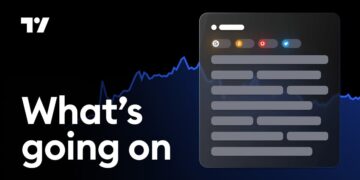The fallout from President Trump’s tariff announcements and revisions hasn’t yet pushed investors to shy away from an old habit: buying the dip.
Data from VandaTrack showed the week following “Liberation Day” saw “record dip-buying flows from retail investors,” including $3 billion in net purchases on April 3, the largest daily total since VandaTrack began collecting this data in 2014.
Global markets sold off sharply in the initial reaction to Trump’s reciprocal tariff announcements that pushed levies to their highest level in a century. Across trading on April 3 and 4, the S&P 500 (^GSPC) experienced one of its worst two-day stretches in history.
Since this initial crash, markets have remained volatile, with the index seeing its best single-day rally since 2008 last Wednesday, April 9.
Read more: The latest news and updates on Trump’s tariffs
“Even prior to Trump’s tariff U-turn, retail investors remained well short of capitulating,” the VandaTrack team wrote in a note on April 9. “The glass-half-empty interpretation is that if this rally turns out to be a mere bear market bounce, the risk of further downside remains on the cards.”
VandaTrack’s team added that retail traders not buying the dip is a “hallmark sign of equity market bottoms,” but it’s not a “necessary condition for an equity trough.”
“At the slightest whiff of good news, people come roaring back in because that FOMO [fear of missing out] never goes away,” Interactive Brokers chief strategist Steven Sosnick told Yahoo Finance last week.
“It’s always there. No one ever wants to miss a rally.”
VandaTrack’s data isn’t the only indication investors have been aggressive in scooping up stocks during the recent drawdown.
An April 8 note from Bank of America showed the firm’s clients were net buyers of $8 billion worth of stock during the week of the initial tariff announcements. This marked the fourth-largest weekly inflow in Bank of America’s data going back to 2008.
Data from Deutsche Bank published Monday also showed equity inflows of nearly $50 billion last week — the largest amount seen in 2025 — including $31 billion flowing into US stocks.
Deutsche Bank chief strategist Bankim Chadha told Yahoo Finance the data shows “risk appetite is still alive.”
Chadha added that the recent flows might not be an indicator that investors are intentionally buying the dip but rather a continuation of a post-pandemic trend of consumers putting excess savings into stocks.


















